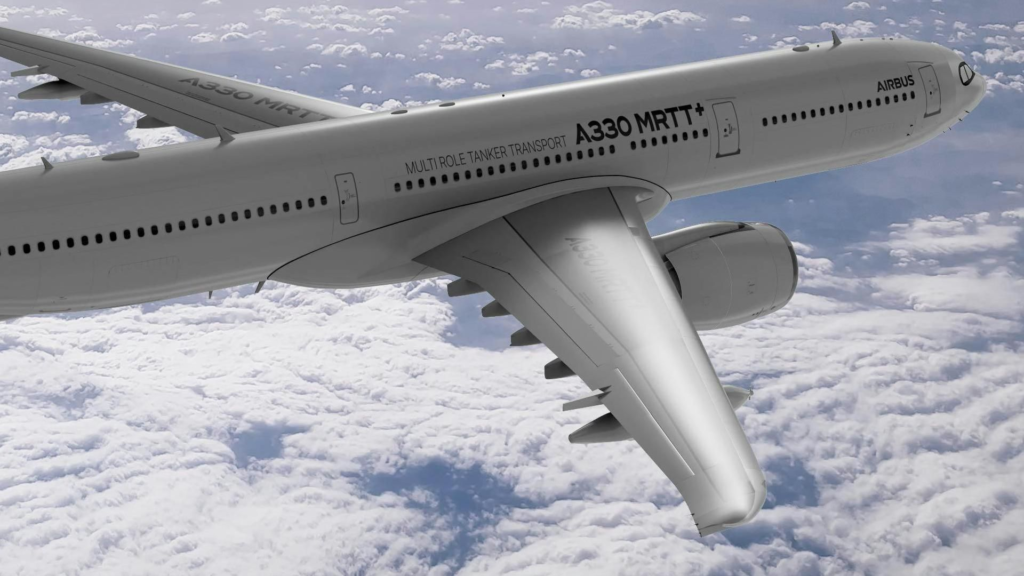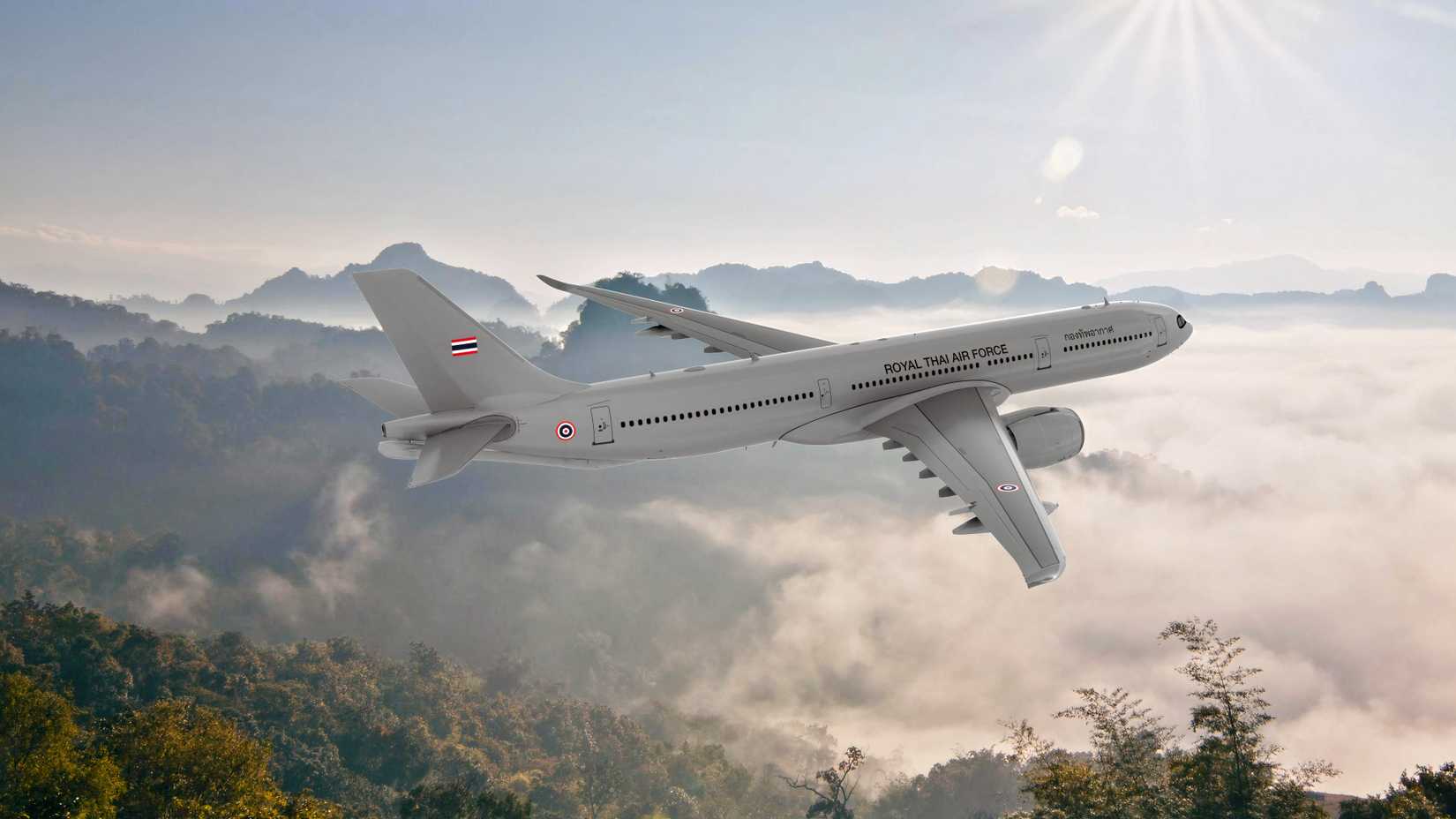The Thai Air Force has ordered one Airbus A330 MRTT+, making it the first customer for the Airbus A330neo-based tanker/transport aircraft. The jet features both boom and hose-and-drogue refueling capabilities, a medical evacuation (MEDEVAC) kit, and a VIP cabin. Military conversions of the model began in 2026 at Airbus’ Getafe factory, with delivery currently scheduled for 2029. The MRTT+ brings Trent 7000 engines to the table, with aerodynamic tweaks and winglets offering 8% lower fuel burn over its predecessors.
- Stock Code
-
AIR
- Business Type
-
Planemaker
- Date Founded
-
December 18, 1970
- CEO
-
Guillaume Faury
- Headquarters Location
-
Toulouse, France
The aircraft produces less noise and offers a 242-ton maximum takeoff weight (MTOW), providing improved range and greater fuel offload. The aircraft retains roughly 95% commonality with current MRTT models, easing training and support processes. Airbus cited that the A330 MRTT has received a lifetime of 85 orders from 11 customers, giving it a market share of more than 90% outside the United States. An expanded Memorandum of Understanding with Thai Aviation Industries demonstrates that the manufacturer’s relationship with the Thai military extends beyond just this deal.
A Brief Look At Thailand’s Airbus A330 MRTT+ Order
This specific order demonstrates the Thai military’s interest in an aerial refueling asset that is equipped with two refueling systems. The aircraft’s centerline fly-by-wire boom for boom-receiver jets and hose-and-drogue pods for probe-equipped aircraft maximizes the aircraft’s interoperability with allied air fleets. The aircraft’s medical evacuation capabilities make it extremely effective for deployments in mass casualty situations or humanitarian missions, in addition to a VIP cabin which can transport Thai leadership.
The model is based on the Airbus A330-800, powered by next-generation Trent 7000 engines. The MRTT+ targets around 8% lower fuel burn and around 242 tonnes of Maximum Takeoff Weight (MTOW) for more range. Airbus’ leadership team is undeniably excited by this announcement. In a statement, Jean-Brice Dumont, the Head of Air Power at Airbus Defence and Space, had the following words to share:
“Thailand’s selection of the A330 MRTT+ underlines the trust placed in this platform, while embracing the next evolution in efficiency, capability and sustainability. This natural evolution of the A330 MRTT, which will be a key asset for the Royal Thai Air Force operations, builds on its proven performance over the past years in service with nine customers all over the world, accumulating more than 340,000 flight hours.”
What Does This Order Mean For Airbus?
Thailand’s Airbus A330 MRTT+ order helps validate Airbus’ decision to upgrade its tanker offerings with an A330neo-based model. The aircraft further underscores the manufacturer’s ability to dominate the tanker market outside the United States. This further extends the production and conversion pipeline at Getafe through 2029, smoothing the overall workload for the manufacturer.
The aircraft order helps underscore the cash flows being generated by Airbus Defense following this latest wave of global military spending. The MRTT+’s efficiency gains also make it an appealing choice, and its mission flexibility means that it can provide strategic value to any military organization.
Symbolically, it further plants the Airbus flag in Southeast Asia, providing a gateway customer for Airbus Defense in the region. The expanded MoU with Thai Aviation Industries highlights Airbus’s ability to collaborate with the local industry.
What’s Our Bottom Line?
Ultimately, we see this move as a strategic victory for Airbus, which had been looking to land a headline order for its Airbus A330neo MRTT+. With defense budgets continuing to grow amid sustained geopolitical conflict, contractors like Airbus have been looking to try to capture as much of the market as possible.
Airbus’s moves in the tanker space have been commendable. The aircraft offers genuine improvements over its predecessors, and there is no reason to lead customers to expect delivery delays or other teething challenges.
Investors reacted calmly to the news, with shares mostly staying flat throughout daytime trading. Investors will likely need to see significantly more orders before they can get exceptionally excited by the model’s capabilities.





